Pennsylvania, the Keystone State, is full of rich history and historical monuments. It has large, diverse cities, and sprawling, peaceful mountains. The state flower is the mountain laurel, but there are more than 2,100 native plants in the state.
This Pennsylvania native plants list will help you learn more about some possible options for your garden or landscape. When you want to make the best of your garden and landscape and also bring benefits to the local environment, go native all the way!
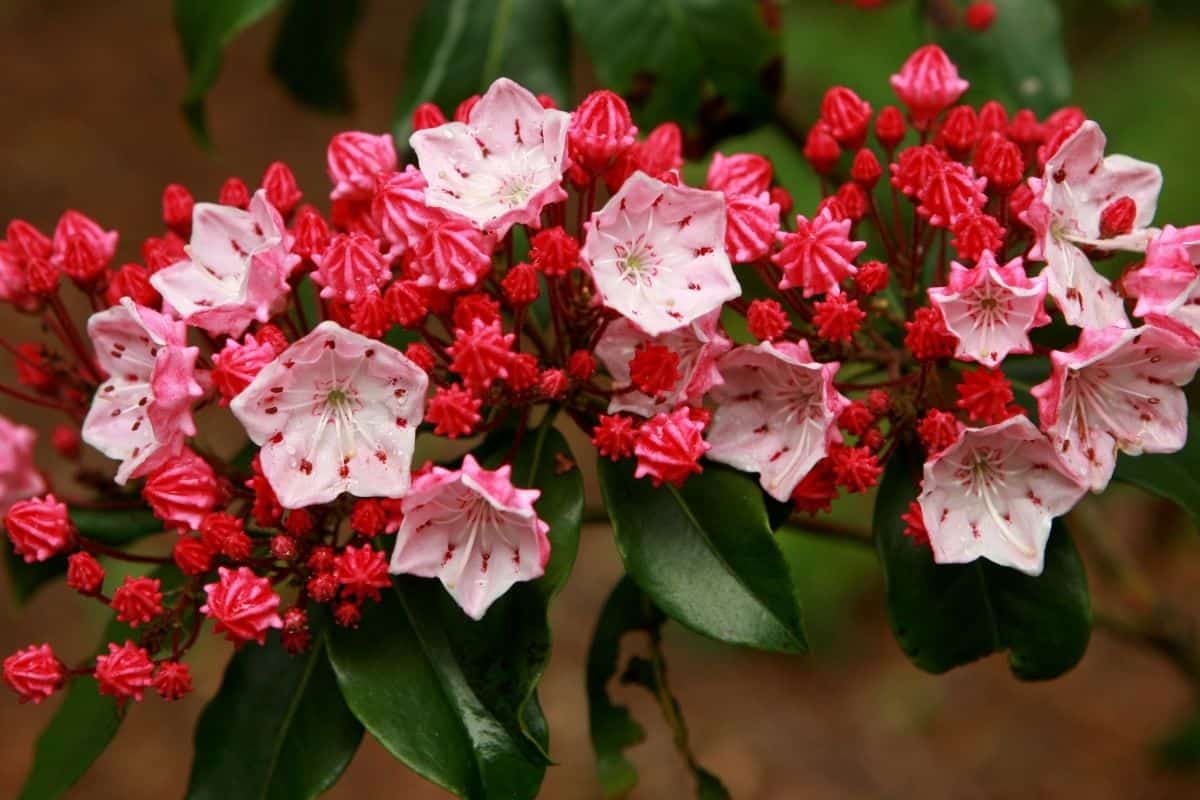
Benefits Of Native Plants
Before we get to the list, let’s take a look at some of the benefits of native plants to you and to the local environment. Some of these benefits include:
- They are low maintenance and easy to care for
- They use less water, so they help conserve water
- They help support native wildlife such as pollinators, birds, and small mammals
- They have beautiful colors to brighten your garden or landscape
- They require few to no pesticides
How non-native plants cause harm
There are over 1,300 non-native species now exist throughout the state, and some of them are invasive plants. You might be wondering what the problem is with non-native plants and why you don’t want them in your garden or landscape.
Non-native plants will support fewer species of caterpillars which also means fewer food sources for local birds. They also create a situation where native plants must fight for nutrients and other resources in the same space. If they steal resources from native plants, the natives could die off. Native plants do more for the environment and local wildlife.
Pennsylvania Native Plants List
Native plants can include wildflowers, shrubs, trees, sedges, rushes, ferns, grasses, vines, and more. Of these types of native plants, many of them can work in your home garden or landscape, once you learn how. A native plant is defined as any plant species that were here before early settlers moved onto the land.
These plants are native to Pennsylvania and do very well in your home landscape. You should follow responsible landscaping techniques and use native plants wherever you can.
1. Bee balm (Monarda didyma)
This perennial is best for moist, sunny spots in your landscape. It’s a great nectar source and will spread well to naturalize areas. It is also called scarlet beebalm, red bergamot, and Oswego tea.
BEe balm belongs to the mint family: the leaves have a minty aroma, especially when crushed. It’s usually about 2 to 4 feet tall but can grow as tall as 6 feet sometimes.
The red flowers bloom from May to October.
2. Golden sundrops (Oenothera fruticosa)
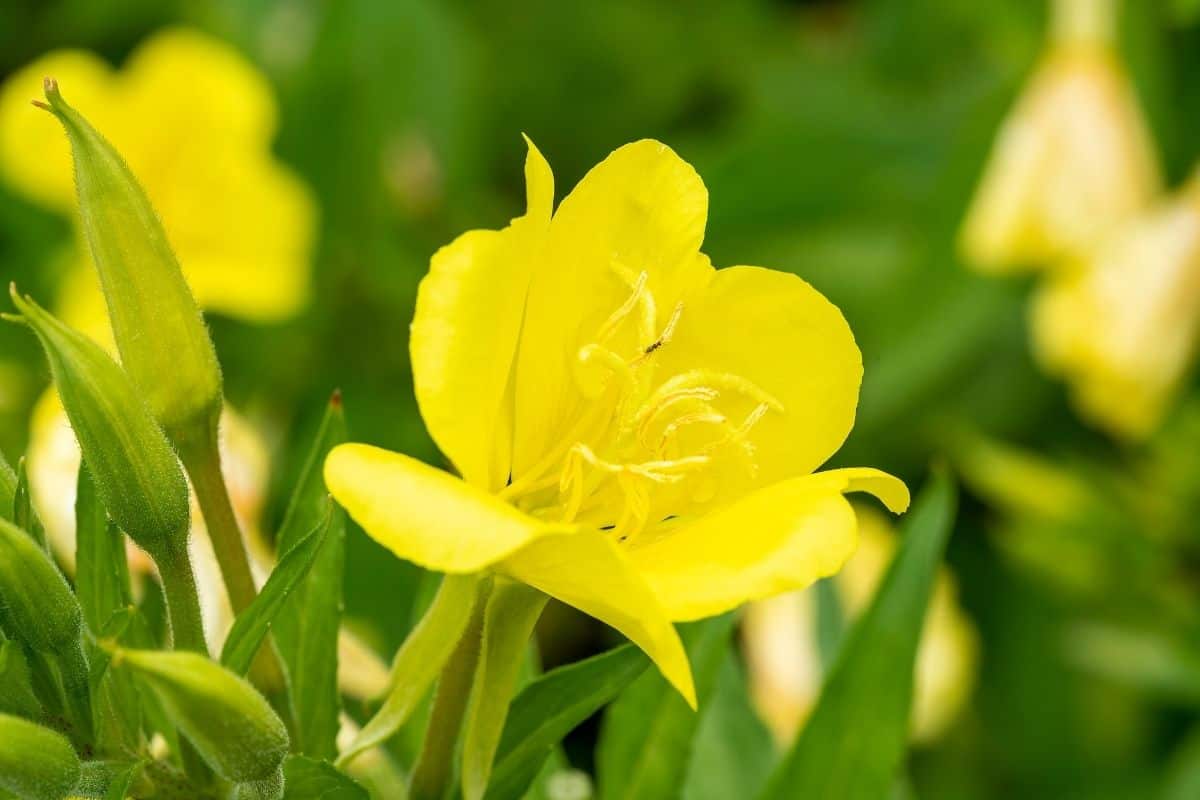
This is a good choice for sunny sites with dry soil. It’s long-blooming and drought-tolerant and blooms beautiful, bright sunny flowers.
Golden sundrops is a stunning yellow flower that is perfect for butterfly gardens. They usually grow from 18-24 inches tall and have 2-inch petals that bloom from April to July. It will attract hummingbirds, birds, and other pollinators.
3. Wild blue phlox (Phlox divaricata)
This beautiful, unique flower goes by other common names such as blue woodland phlox, sweet William, and Louisiana phlox. It grows from 8-18 inches tall and has loose, flat clusters of purple or pink flowers that smell very nice at the top of the stems.
The flowers are up to 1 inch across, and they bloom from March to May. It likes moist, alkaline soil and part to full shade.
4. Cardinal flower (Lobelia cardinalis)
Cardinal flowers are tall and showy and make a stunning presence in any garden or landscape. They grow from 8-inch terminal spikes and each flower has three spreading lower petals and then two upper petals. They all united into a tube at the base, giving it a very unique look that you won’t soon forget.
Cardinal flowers bloom from May to October and they like full sun but also do fine in part shade to shade, and like moist to wet, humus-rich soil.
5. Goldenrod (Solidago rugosa)
Goldenrod is a member of the aster family with arching flowers that grow in clusters at the top of tall stems. It is sometimes known as wrinkle-leaf goldenrod, rough-leaved goldenrod, rough-stemmed goldenrod, and similar.
The sturdy, erect stems grow about 2-5 feet tall. The beautiful golden yellow flowers bloom in September. It makes a fantastic addition to any native garden.
6. Virginia bluebells (Mertensia virginica)
Another great option is Virginia bluebells. These beautiful blue flowers are in the shape of bells, hence the name. The trumpet-shaped blooms actually start off as pink buds on the end of branched and arching stems. They bloom from March to June and are usually blue or purple with a bit of pink.
7. Blue flag iris (Iris versicolor)
Blue flag iris is also called harlequin blueflag, northern blue flag, and large blue iris. It’s a member of the iris family and one look at the stunning flowers will show you this.
The showy, down-curved flowers are blue to purple (and rarely white) and bloom from May through August. It likes moist to wet soil that is acidic and full sun to part shade. Hummingbirds love this plant, but be aware: it is poisonous to livestock.
8. Butterfly milkweed (Asclepias tuberosa)
Butterfly milkweed is the perfect native plant to bring butterflies to your garden, as the name suggests. It’s a showy plant that is easily grown from seed in home gardens. It’s also known as orange milkweed, chigger flower, and pleurisy root.
The orange and yellow blooms come in May through September and attract the butterflies as well as other pollinators. It is drought-tolerant and likes dry to moist soil and full sun.
9. Swamp milkweed (Asclepias incarnata)
Another native milkweed that is great for your garden or landscape is swamp milkweed. It’s sometimes called pink milkweed because the blooms are usually shades of pink or rose. It grows 2-4 feet tall, and the small flowers are clustered at the top of the long stems.
The swamp milkweed blooms from June to October. It likes rich, wet soil and full sun to part shade. It will attract butterflies and hummingbirds to your garden.
10. Marsh blazing star (Liatris spicata)
Marsh blazing star is known by different names, including dense blazing star, marsh Liatris, dense gayfeather, marsh gayfeather, and dense Liatris. It’s a member of the aster family and it grows tall and erect to about 3-4 feet. It has linear, grass-like leaves that are clumped toward the plant’s base.
Then it has purple tufted flower heads arranged at the top of the long, dense spike. Marsh Liatris blooms from July to September and likes full sun and moist, acidic soil. It attracts birds and is very beneficial to native bees.
11. Black-eyed Susan (Rudbeckia fulgida)
Black-eyed Susan is a distinct and popular flower in the aster family. It has bright yellow ray flowers and a black or brown disc (the “eye”) in the center. It grows an average of 1 to 2 feet tall but can sometimes be taller.
The black eyed Susan blooms from June to October and loves full sun and a dry to moist soil that is acidic. It’s great for attracting birds and butterflies as well.
12. Wild indigo (Baptisia australis)
Wild indigo is bushy and robust and often called blue false indigo or wild blue indigo. It blooms blue to purple flowers from May to July and is a member of the pea family. It’s 3 to 5 feet tall, on average, and can spread up to three feet wide. It does best in full sun and moist soils that are well-drained.
The showy flowers look amazing in your garden and will attract native bees.
13. Common milkweed (Asclepias syriaca)
Another native milkweed that is great for your garden is common milkweed. When most people think of the milkweed plant, this is precisely the one that comes to mind. It grows from 3-5 feet on average but can grow as high as 8 feet in certain conditions.
This milkweed plant has ball-shaped umbels at the tops with as many as 100 flowers each, growing in clusters.
The white and purple flowers bloom from June to August. This is an excellent plant for attracting all types of native bees and also butterflies and moths.
14. Foamflower (Tiarella cordifolia)
Foamflower is an interesting plant sometimes called heartleaf foamflower because the large leaves take the shape of hearts. The long, slender stamens have spikes of white flowers on the top. The flowers are star-shaped and appear in clusters.
This plant grows from 6 to 12 inches tall and blooms from April to July. It prefers growing in the shade and likes acidic, moist, well-drained soil.
15. Golden ragwort (Packera aurea)
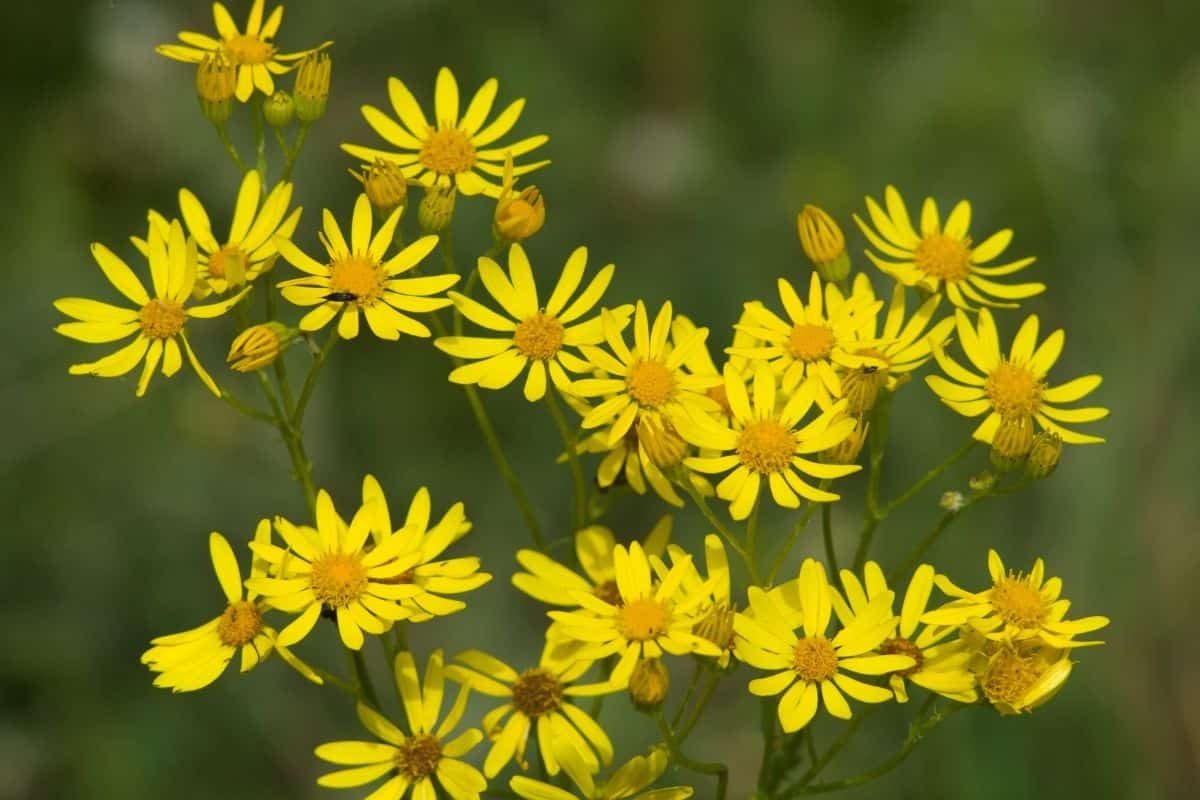
Golden ragwort is another yellow flower that will look amazing in your native garden. It’s sometimes called butterweed or golden groundsel.
Like others on this list, it’s part of the aster family as well. The flowers are about one inch in diameter, and they bloom from March to August, providing long-term benefits to native bees. They love sun, part shade or shade, and moist, acidic soil. It can tolerate some seasonal flooding.
16. Obedient plant (Physostegia virginiana)
Obedient plant is also called fall obedient plant, false dragonhead, and Virginia Lions-heart. It’s part of the mint family and the four-foot stems grow in clumps and have long leaves.
There are 4–6-inch terminal spikes of lavender or pink flowers that resemble snapdragons a bit. They bloom from August to November. They like full sun, part shade and shade, and moist soils.
The obedient plant flowers are great for attracting hummingbirds and butterflies.
17. Mountain laurel (Kalmia latifolia)
Mountain laurel is also called calico bush and kalmia. It’s in the heath family and typically is a 12–20-foot flowering shrub. Sometimes it is taller and takes on the form of a small, single-trunked tree.
It is a beautiful choice for an ornamental in your landscape and the white and pink unique flowers bloom in June and July.
Now that you have a list of some great native perennials to consider for your home garden or landscape, you’re ready to start planning.
Pennsylvania native plants list FAQ
Here are some common questions we see asked about native plants in this state.
How many native trees are in Pennsylvania?
The state has over 134 native trees that make up its thriving forests. These include red maple, eastern white pine, eastern hemlock, eastern red cedar, sugar maple, swamp white oak, flowering dogwood, sourwood, eastern redbud, fringe tree, river birch, black tulepo, and sweetbay magnolia to name a few. These are all options that work well in a home landscape.
What are some native shrubs in Pennsylvania?
The state also has many native shrubs that work great in home landscapes and gardens, too. Consider summersweet, winterberry, witch alder, northern spicebush, red twig dogwood, American pussy willow, New Jersey tea, Virginia sweetspire, swamp azalea, mountain laurel, and more.
How can I start a native garden in Pennsylvania?
It’s great that you’ve decided to start a native garden but it’s normal to feel a little overwhelmed or not to know where to start. The Pennsylvania Department of Conservation and Natural Resources has some great information to help you get started, including native garden templates.
Where can I buy native plants in Pennsylvania?
There are many great places to buy native plants in the state. There are quite a few native plant nurseries for you to buy them from. You can also find native plant sales at state parks, from the Pennsylvania Native Plant Society, and more. The Pennsylvania Department of Conservation and Natural Resources has some more resources here.
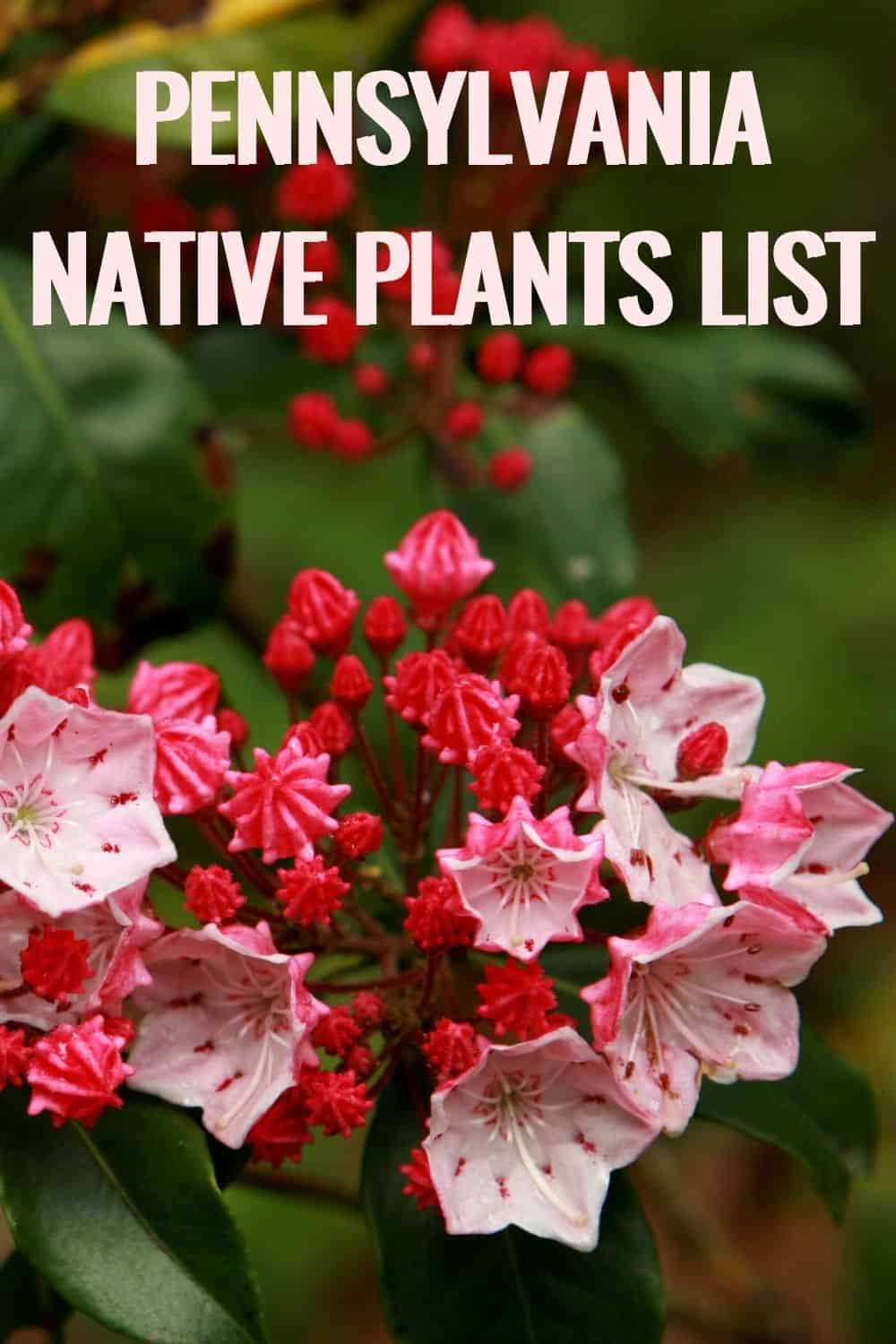

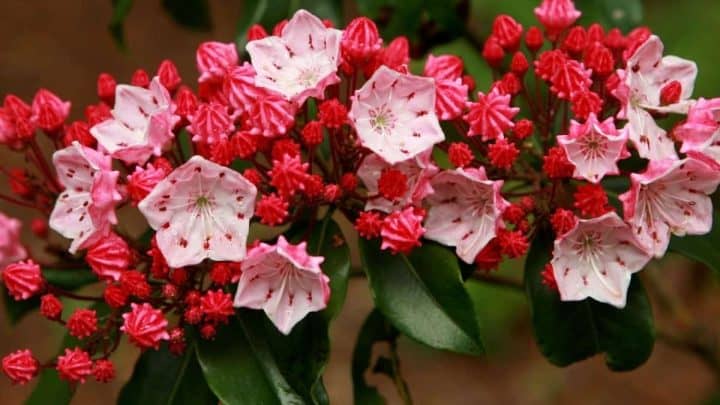
















Sharon
Sunday 14th of July 2024
Great info! I have wanted to create a native garden for pollinators but did not where to start. This will be very helpful. Thank you
keith
Sunday 2nd of July 2023
this is the information I have been looking for -thank you
corinne
Saturday 27th of May 2023
these where phonomenal im planning for next year to work with my mom on the garden!